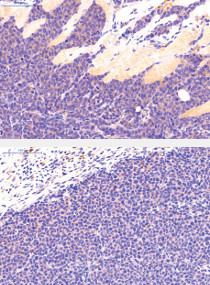discover
SHUTTING DOWN CANCER STEM CELLS
 photo: John Quinn
photo: John QuinnHuiping Liu
Most cells have term limits. They divide a few dozen times and then retire from reproduction. Two types of cells defy that pattern by multiplying ceaselessly: stem cells—which give rise to every cell in our bodies—and cancer cells.
A growing number of researchers are convinced that this similarity is no coincidence. Indeed, they suggest that cancer gets its start when stem cells accumulate mutations during continual replication, an idea that's fueling new ways of finding cancer's vulnerabilities.
Huiping Liu, MD, PhD, hopes to leverage her discoveries about stem cells and cancer to undercut cancer's most deadly attack: metastasis.
"Primary tumors don't kill patients. It's actually the metastases that kill patients," said Liu, an assistant professor in Case Western Reserve School of Medicine's pathology department and a member of both the Case Comprehensive Cancer Center and the National Center for Regenerative Medicine, two multi-institution initiatives based at the university.
Blocking cancer's ability to grow far from the primary tumor could keep patients alive.
"My research is trying to understand how stem cell properties contribute to this process of seeding cancer's spread," Liu said. To help reach that goal in breast cancer, she recently received a four-year, $786,000 American Cancer Society Research Scholar Grant.
The field of cancer stem cells is relatively new. Although stem cells were identified in leukemia in the 1990s, stem cells weren't found in solid tumors until a little more than 10 years ago, in breast cancer. Since then, stem cells have been found in many other tumor types, including cancers of the brain, colon and prostate. "More and more, people are coming to accept the role of stem cells in cancer's growth and spread," Liu said.
Her research has uncovered an intriguing mechanism in stem cell replication that could prove important in cancer control: a regulating unit called microRNA-30c. MicroRNAs are short strings of nucleotides—the beads in the chain that form RNA—capable of preventing the action of certain genes. MicroRNA-30c applies the brakes to tumor invasion. Liu said the more microRNA-30c a patient's tumor cells carry, the less likely a metastasis will occur and the greater the chance of survival.
Cells with many copies of microRNA-30c are less likely to travel around the body and more likely to succumb to chemotherapy. If microRNA-30c is in short supply, metastatic disease is likely, and the prognosis is far worse.
Cancer stem cells are uniquely resistant to most conventional cancer therapies. Dose a population of cancer cells with chemotherapy or radiation, and only a small fraction of the stem cells die, even while most non-stem cells are killed, but Liu intends to attack these cells with microRNA to make them less invasive and more vulnerable to chemotherapy. Further, her team is testing an antibody therapy that also interferes with cancer's stem-cell-like behavior.
"We're doing basic biology to understand cancer stem cells, and we're trying to move our discovery from the laboratory so that we can someday lengthen the lives of cancer patients," Liu said.






